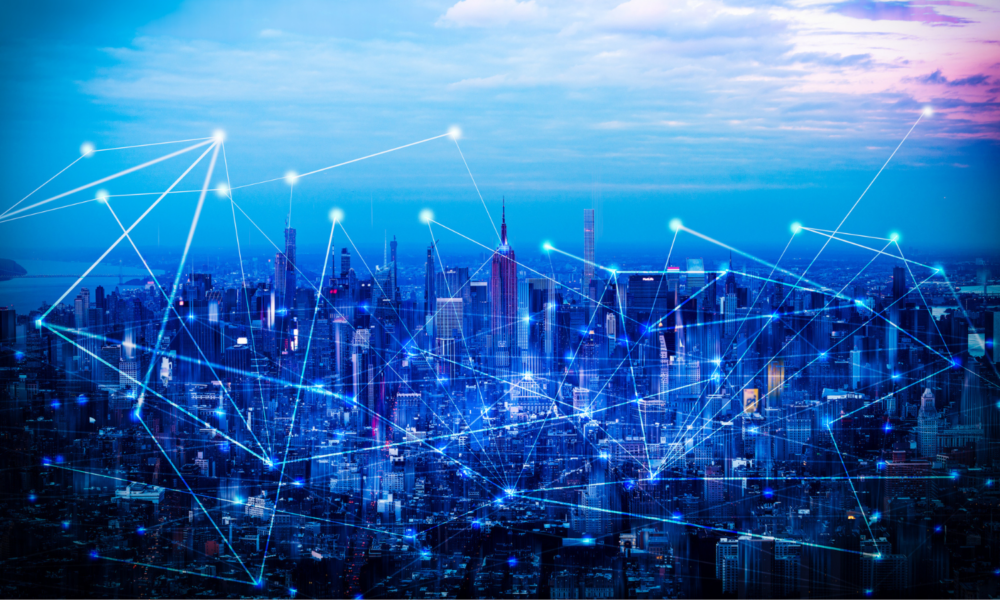Data use for everything from video conferences to cryptocurrency to calendars, and related data center construction, is booming. Infrastructure and resources for those data centers are relatively scarce. How will we go forward? Is this a lawless frontier for an industrial revolution that breaks the bounds of human activity, or will we find constraints and apply limits that protect the health and welfare benefits of our society and economy?
I work in the electric utility sector, specifically on the grid issues that shape our energy supply choices. I heard some early warnings of data center growth running into grid limits first from tech companies and then from electric utility planners. But I could have seen the future just by looking at the younger generation of my own family. Amongst my kids and their cousins, four are adults and are all employed in data or internet jobs, and the fifth, still a teen, uses a smart phone like most other teens do: all the time. Some forecasting models must use observations of young people, no?
We need to plan for energy infrastructure that supports our economy and reduces harmful air pollution. The demand (and profits) from data centers seems to be motivating utilities to respond. Grid modernization and continued investment are on-going. It is better to understand this new driver in context so we can focus on solutions that serve all of society.
Electricity use by data centers is rapidly rising
In the energy sector, the rapid growth of data centers’ energy use has already changed the course of electricity supply and demand. Presently, there are five different states where data centers consume over 10% of statewide electricity used: Virginia (the US leader at over 25%), Oregon, Iowa, Nebraska, and North Dakota. And the latest projections estimate that globally, data center electricity demands will double in the next two years. This growth is a jolt to the usually slow-moving electricity sector. For more than two decades, demand growth in the electric utility world was very low. This slow growth weakened utility planning and supply chains. Workforce development also suffered. Electrical engineering students studied computers in vastly greater numbers than electric power. (That’s another indicator from the choices made by our younger generation that we all missed.)
Many new data centers are not going to support just “one thing” and so the development of a new data center is not always going to be transparently related to video conferences, or bitcoin mining, or artificial intelligence (AI) used by students and factory operations. Data centers support many internet-based services. Some services need to be physically closer to consumers to reduce delays, such as updating driving directions (and advertisements of nearby business) for drivers of moving cars. On the other hand, things like hotel reservations, credit card billing, email and hosting your photos are not so time sensitive that the data center needs to be nearby.
Newer services tend to use more data, and thus more energy. Processing large amounts of data is a central step in AI. The general practice of AI stems from “machine learning” from many, many pieces of data. The growth of AI is clearly causing growth of data centers and the size and energy needs of data centers.
The grid might not meet that demand
Electricity for data centers comes from the grid, and by extension, the mix of power plants that supply the grid. Single data centers can require as much electricity as small cities. New data center proposals can be of the scale of nuclear power plants and some even seek to connect directly to existing nuclear plants. A couple of those might happen, but there are limits that will foil the ambitions of more than a few data center developers. The most immediate limit is the physical ability of the grid today. The electric utility sector needs to expand both the wires and energy supply to support the growth of data centers. This needs some thought, as both the laws of physics and the principles of supply and demand will apply, even if legislatures and regulators have not yet spoken about allocating costs and resources related to data center energy demands.
Some of the better-known computer and data companies—understanding the impact of this much higher demand—have been actively buying energy from new renewable energy power plants. Solar and wind projects, as well as offshore wind projects, have been built with contracts from some data center owners. These owners understood both the need for a supply of energy, and the value and reliability of clean energy. A significant fraction of the clean energy built in the US was financed on the commitments by such high profile, public data companies. These firms recognized that they could not assume the risks of exacerbating climate damage from continued burning of fossil fuels.
Data centers’ total energy demand is challenging to meet. Across the US data center energy use grew 66% from 2020 to 2023, from 90 billion kilowatthours to 150 billion kilowatthours. The size and growth of US solar farms’ energy production has nearly matched this for those same years. Thus the progress so far with large-scale solar in reducing carbon emissions is offset by the present levels of energy use by data centers. Wind, solar and battery storage are the fastest growing electric energy sources and should be the first choice for a modern economy adapting new data technologies.
The growth in solar looks to be keeping up with the growth in data, according to the latest projection from the US Energy Information Administration. But that solar growth is nationwide and the data centers are generally located in geographic clusters. This surge in simultaneous but disparate supply and demand reveals how utility planning for growth has fallen behind in the regional transmission organization PJM, which includes Virginia, the state with the largest amount of data centers.
PJM has been notoriously difficult for solar and storage expansion on the grid. With continuously changing rules for power plant additions to the grid and credit for reliability, PJM has less than 1,400 megawatts (MW) of solar and only 14 MW of battery storage counted as meeting demand. Compared to PJM demand of 140,000 MW, that is 1 percent and 1/100th of 1 percent, respectively. It is not a coincidence that PJM still hasn’t produced an official transmission plan that looks to the future and prepares for building a single new power plant or the closing of any old power plants. Required reforms are under way, and the first PJM plan under those new rules will be ready in…wait for it… 2030!
More planning, for the grid and the climate, is needed
The newest energy deployments on the grid, solar and storage, have a lot in common with data centers, the newest driver of electric utility investment. The transmission system that these technologies share, and that is also used by everybody else, needs forward looking modernization. Solar and wind energy development have already been stymied by inadequate transmission planning. Now, data center companies are also delayed by a lack of transmission.
The local transmission utility in Virginia, Dominion Energy, is responding to data center growth with a wave of new construction. Currently in the works are forty substations in Virginia for data centers, costing well over a billion dollars. Nothing like this has been seen before, yet we are told to expect much more. Dominion Energy can’t address the laws of physics, or even the laws of supply and demand, by themselves. If this is a new industrial revolution, we’re going to have to do better to protect our resources and climate than we have in the past.
If the modern economy is going to better deliver health and welfare, it won’t be due to voluntary actions by some data companies. For starters, the energy, climate and water issues exacerbated by data center demand need to be priced into the data business. We have the ways and means to do that. We just need to bring the political will.

